July 25, 2013 at 4:37 am
Our travels on Thursday and Friday  took us to a scenic region of Miyun County, north of Beijing city, where we stayed at a small vacation resort amid rivers, cliffs, and canyons. More hiking meant sore legs for most of the B.U. contingent, but we were rewarded with beautiful views and countless waterfalls.
took us to a scenic region of Miyun County, north of Beijing city, where we stayed at a small vacation resort amid rivers, cliffs, and canyons. More hiking meant sore legs for most of the B.U. contingent, but we were rewarded with beautiful views and countless waterfalls.
Friday morning, we experienced what most agree was a real highlight of our week: we hiked back into a steep river canyon and enjoyed a refreshing dip in a cold, clear swimming hole.
(Click on photos to enlarge).
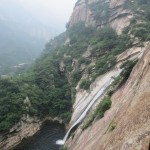
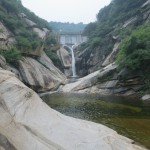


By cgschina
|
Posted in Uncategorized
|
July 23, 2013 at 8:40 am
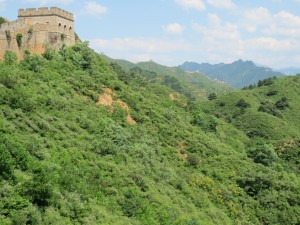
A guard tower at left, the Wall snaking endlessly over mountains to the right (click on images to enlarge)
On Wednesday we traveled about 2 hours north of the city of Beijing to visit the Great Wall. We hiked a spectacular section of the Wall, called Jinshanling, on a beautiful, sunny day. In all directions we enjoyed views of mountains, walls, and watchtowers as far as the eye could see.

An unrestored section of Ming Dynasty-era Wall
Several sections of the Wall have become so clogged with tour buses, gift shops, and visitors that one's enjoyment of the Wall may be a bit compromised. Jinshanling, however, is a less heavily visited section, and our hike was both challenging and rewarding, and we often had long stretches of the Wall to ourselves. We even hiked up to the Wall in darkness early Thursday morning, in hopes of catching a spectacular sunrise over the Wall.

The Wall at sunrise - about 4:50 a.m.
Clouds prevented us from seeing a truly memorable sunrise that morning, but it was peaceful and beautiful to watch the emergence of the morning light gradually change the colors of the landscape, both natural and constructed. The Walls in this section date to the mid-Ming Dynasty period, about 450 years ago, and were intended to repel Mongol raiders from the north.
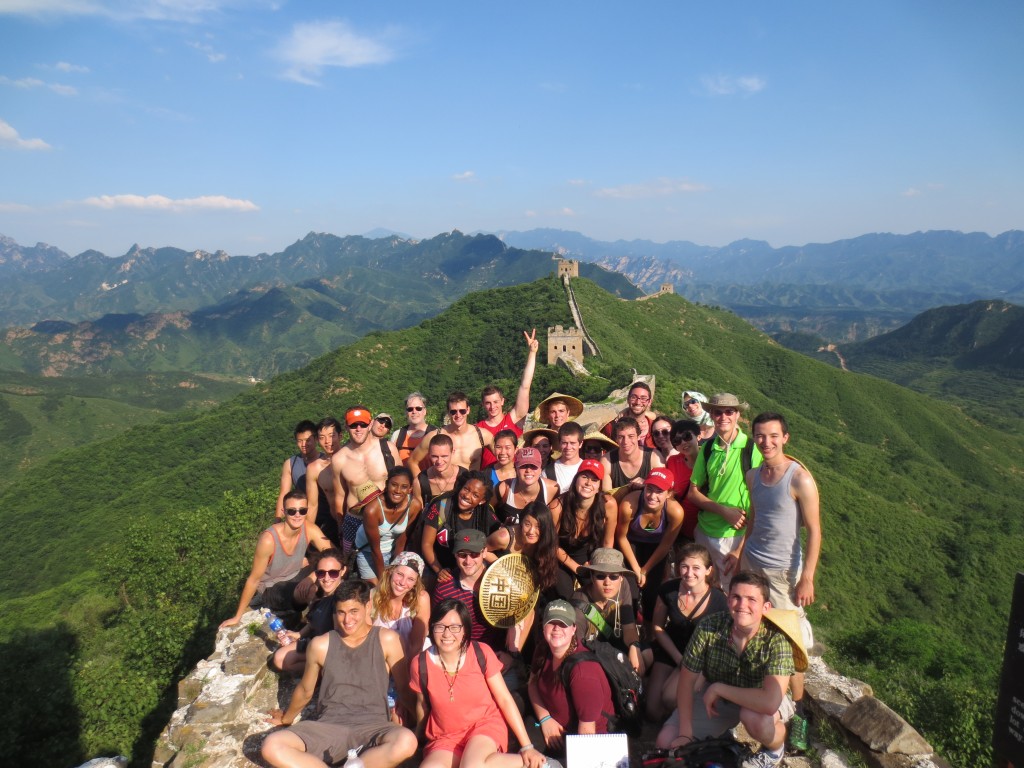
BU conquers the Great Wall of China
By cgschina
|
Posted in Uncategorized
|
July 23, 2013 at 7:07 am
If there is a more photogenic group of buildings than those at the Temple of Heaven, I haven't seen them.

The Hall of Prayer for Good Harvests
Built in the same period as the Forbidden City, The Hall of Prayer for Good Harvests serves as a symbol of Beijing, rather in the way that the Statue of Liberty is a symbol of New York, or the Liberty Bell represents Philadelphia. For centuries, Emperors were accompanied by elaborate processions to the temple to perform sacred rituals.
We toured the Temple of Heaven after our visit to The Forbidden City, which made Tuesday a day of Beijing icons for the BU gang. It was a long day under the sun, but well worth it.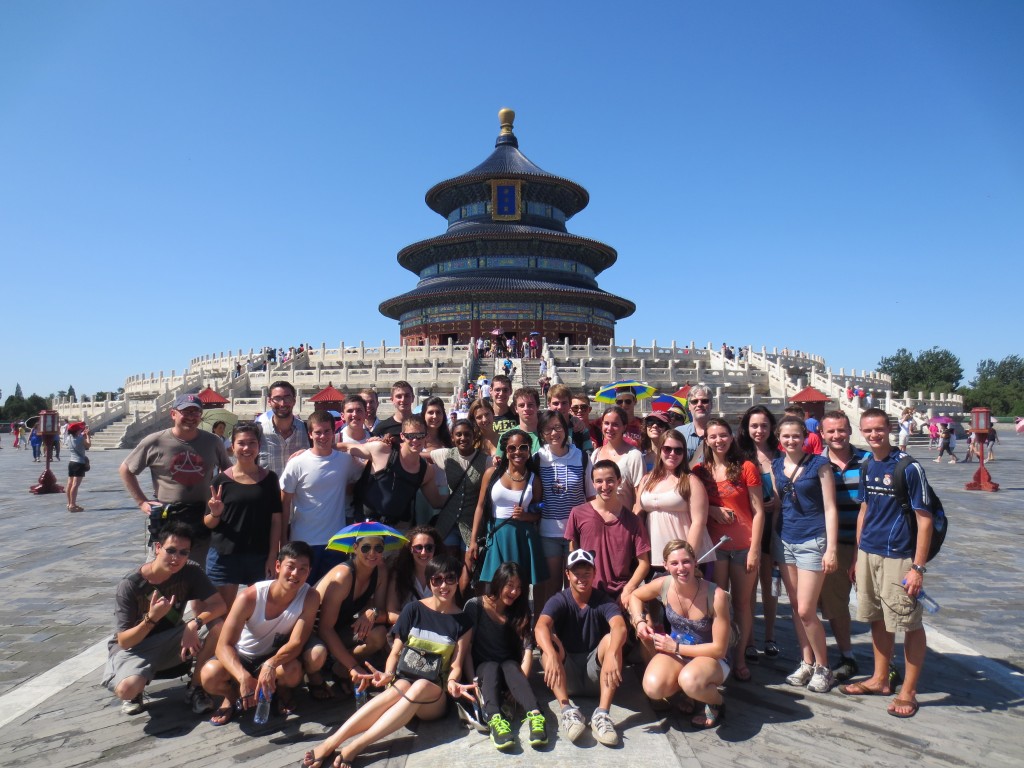
By cgschina
|
Posted in Uncategorized
|
July 21, 2013 at 1:56 am
In 1406, the Yongle Emperor ordered the construction of the vast array of buildings that would come to be known as the Forbidden City.
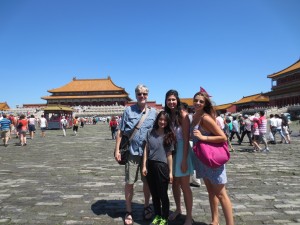
The CGS crew in the Forbidden City
Between 1420 and 1911, it served as the imperial palace complex for 14 emperors of the Ming Dynasty, and 10 emperors of the Qing Dynasty. Partly due to the intervention of Zhou Enlai, the Forbidden City avoided the destruction of the Cultural Revolution, and today it is one of China's foremost tourist sites, with good reason.

The fanciful creatures that adorn rooftops in the palace
We were very fortunate to have a beautiful day of sunshine and blue skies for our tour of this remarkable historic landmark. Such days aren't terribly common in Beijing, which is known for it's infamous smog. After making our way through the palace itself, we walked to Jingshan Hill to enjoy a view over the entire complex.
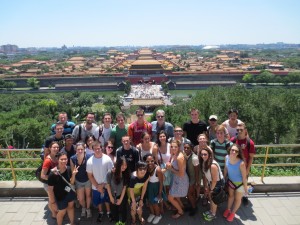
The whole BU Shanghai contingent on Jingshan Hill, with the Forbidden City in the background
The Forbidden City contains nearly a thousand buildings, and it is over 3,00o feet from north to south, and nearly 2,500 feet from east to west. The north wall is also guarded by a moat, which you can view by clicking on the photo at left and enlarging it.
By cgschina
|
Posted in Uncategorized
|
July 15, 2013 at 2:01 pm

Houhai Lake in Beijing
Our first stop in Beijing, after checking into our hotel, was to the tourist area around Houhai Lake. We had the misfortune to arrive on a rainy day in Beijing, but our tour was enjoyable nonetheless.
We walked toured around the lake, and saw some of the cafes, shops, restaurants, and bars that surround the water.
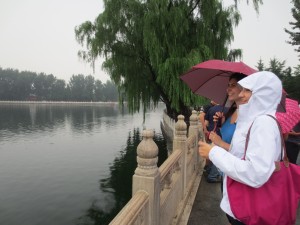
CGS students don't let a little rain dampen the mood at Houhai
Even more interestingly, we saw some of the traditional Beijing-style housing known as hutong. As we walked through the narrow alleys of the area, we got a view of some of the courtyard-style residences that still exist in the city, but once were much more representative of the kind of housing found in Beijing.
By cgschina
|
Posted in Uncategorized
|
July 15, 2013 at 1:19 pm
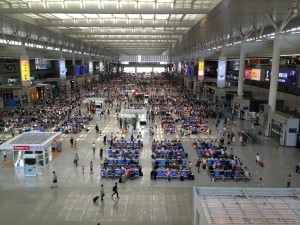
Shanghai's huge, gleaming new Hongqiao Railway Station
The students and staff of the B.U. Shanghai Summer Programs arrived in Beijing today for our week away. We'll visit major historical sites in the capital, then venture off to the Great Wall and the mountains north of the city.
We came via the high-speed train between Shanghai and Beijing; we made a journey equivalent to traveling from North Carolina to Boston in 4 hours and 40 minutes - not bad.

The speedometer in the cabin of the high-speed train (that's 187 mph)
China has embarked on massive infrastructure projects in recent years, with some very substantial results. The railway projects have not been without their problems, to be sure, including a major accident and numerous accusations of official corruption. But after taking this trip, it's hard not to think that rail travel in the U.S. is about 30 years or so behind the times.
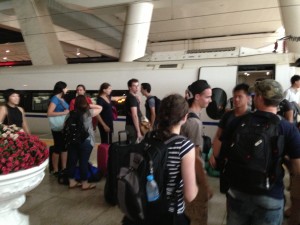
B.U. arrives in Beijing
It was a pleasant way to travel between these two huge, fast-changing cities, and a good start to our trip. If internet connections cooperate, I'll continue to post about our experiences during the week.
By cgschina
|
Posted in Uncategorized
|
July 13, 2013 at 3:20 am
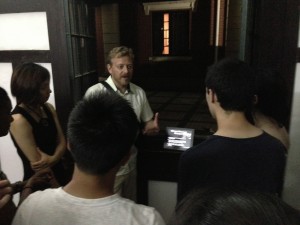
Students and staff listen to Andrew Field's take on the musical history of the city.
Last night students and staff were treated to a music tour of Shanghai, conducted by the director of the B.U. Shanghai Program, Dr. Andrew Field. Our first stop was the Shanghai Conservatory of Music, where we learned a wide range of interesting facts about the development of western music in the first half of the twentieth century in Shanghai.
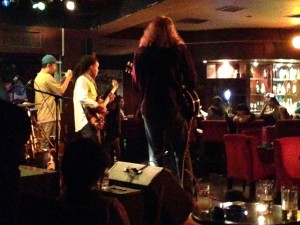
The house band lays down the funk at Shanghai's Cotton Club
One of the more interesting elements of the talk involved the role played by Shanghai's Russian community in bringing western music to China. After the 1917 Bolshevik Revolution, many conductors, composers, and professors of music fled Russia, and some of them ended up in Shanghai. They became some of the most important early professors at the Conservatory, and helped bring the musical traditions of Europe to China.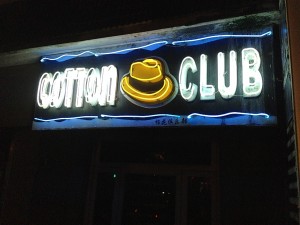
Later in the evening, we were treated to live music performances at two of the top clubs in Shanghai. At the Cotton Club, we saw a funk/pop performance, featuring an outstanding local trumpet player who goes by the name "Dr. Hu." And at our last stop, we enjoyed 30s and 40s-style Shanghai jazz at the JZ Club.
By cgschina
|
Posted in Uncategorized
|
July 9, 2013 at 10:27 am

The site of the first Chinese Communist Party Congress in 1921
The students and I visited the Xintiandi section of Shanghai today. This neighborhood is home to the museum that commemorates the site of the first congress of the Chinese Communist Party in 1921. Here, firebrand iconoclasts like Chen Duxiu and Marxist philosophers like Li Dazhao built the party that would come to dominate China some two decades-plus later.
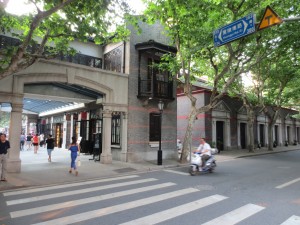
The birthplace of the CCP to the right, a gateway to shops and restaurants to the left
The location of this museum couldn't be more incongruous. It is surrounded by what could only be described as a frenzy of consumer capitalism. Just to the left of the museum entrance is a gateway to fashionable cafes, bars, restaurants, and shops. And the city blocks surrounding this street are absolutely filled with high-end shops and malls.

The students enjoy an ice cream in Xintiandi
It's hard to imagine what Chen Duxiu, or for that matter, Mao would think of this neighborhood if he came back and saw what it has become. But I think it's pretty safe to say they'd be confused.
In any event, it's a nice place to stop for an ice cream on a hot day. And Shanghai has more than it's share of hot days.
By cgschina
|
Posted in Uncategorized
|
July 9, 2013 at 9:59 am
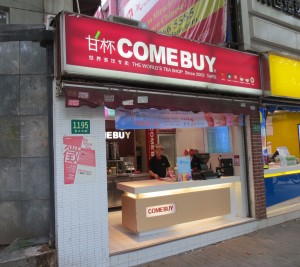
A Taiwan-based tea shop in Shanghai gets right to the point
By cgschina
|
Posted in Uncategorized
|
July 7, 2013 at 8:55 am
One of the interesting things you can find in public city parks in China is a "marriage market." For a relatively small fee, parents of unwed adult children can post descriptions of their offspring, hoping to attract a possible mate (or, more likely, parent of a mate, who will pass along the information).
interesting things you can find in public city parks in China is a "marriage market." For a relatively small fee, parents of unwed adult children can post descriptions of their offspring, hoping to attract a possible mate (or, more likely, parent of a mate, who will pass along the information).
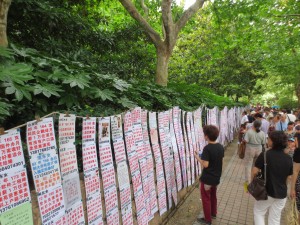 In some cases, the advertisements, for lack of a better word, include photos, but normally, they include text that describes the physical details, job or job prospects, and other statistical information about the single person in question. Apparently the success rate of these marriage markets isn't very high, but as you can see, that doesn't seem to detract from their popularity. A couple of years ago, I saw one in Chengdu, in Sichuan Province, and it was just as busy and crowded as this one, in People's Park in Shanghai.
In some cases, the advertisements, for lack of a better word, include photos, but normally, they include text that describes the physical details, job or job prospects, and other statistical information about the single person in question. Apparently the success rate of these marriage markets isn't very high, but as you can see, that doesn't seem to detract from their popularity. A couple of years ago, I saw one in Chengdu, in Sichuan Province, and it was just as busy and crowded as this one, in People's Park in Shanghai.
By cgschina
|
Posted in Uncategorized
|
 took us to a scenic region of Miyun County, north of Beijing city, where we stayed at a small vacation resort amid rivers, cliffs, and canyons. More hiking meant sore legs for most of the B.U. contingent, but we were rewarded with beautiful views and countless waterfalls.
took us to a scenic region of Miyun County, north of Beijing city, where we stayed at a small vacation resort amid rivers, cliffs, and canyons. More hiking meant sore legs for most of the B.U. contingent, but we were rewarded with beautiful views and countless waterfalls.


























